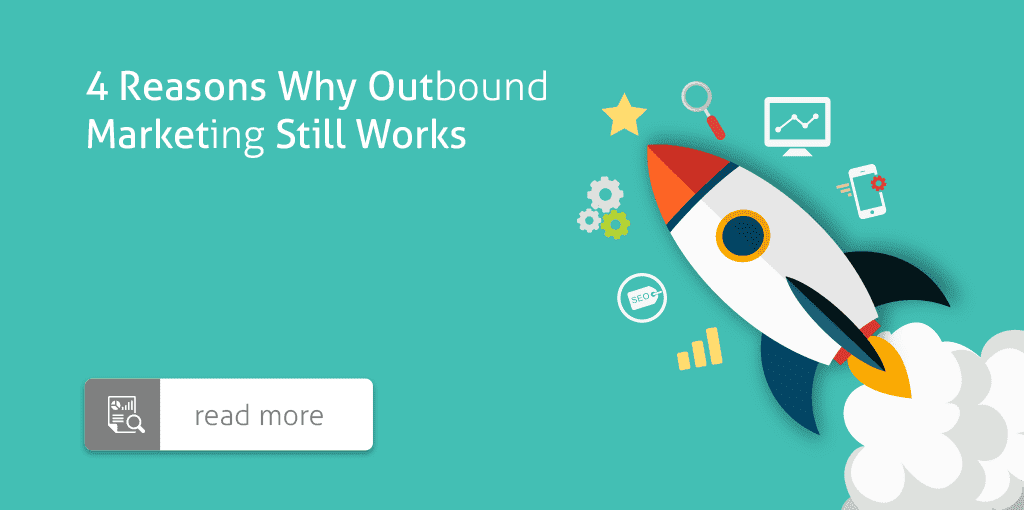The digital landscape has ushered in innovative and exciting ways to drive traffic to your site and inbound marketing has become a recent buzzword. Inbound marketing is the method of drawing people to your website who are specifically looking for the service you provide. Instead of throwing your message out there and hoping it sticks, inbound works to draw in people searching for a solution.
While inbound leads can be valuable and have impressive conversions rates, traditional outbound methods shouldn’t be cast aside.
Let’s take a look at four reasons why outbound marketing still converts digital audiences today:
1. Your competitors are still using it.
There’s no way around it – paid online advertising is only growing in strength. A study by Expanded Rambling found that Google’s revenue from Adwords topped $51.81 billion dollars in 2015.
That’s right – billions.
This means there is a good chance your competitors are running some sort of paid advertising campaign for their business. In addition to Google, there are numerous platforms reaching wide audiences daily, including:
- Bing
- Tumblr
- Snapchat
The main benefit to advertising with these sites is the power of their audience. Facebook has over 1.4 billion active users and that number is only growing. If you aren’t getting your message in front of that audience, there’s a chance someone else is taking advantage.
2. It can generate leads quickly.
For brand new businesses, organic growth is something that can take time. Google has many factors to consider when ranking websites in searches. Domain authority and age are two things businesses just can’t compete with.
Most marketing experts will give a range of three to six months before organic rankings start to improve and that’s with a long term inbound content strategy and near perfect optimization. Paid or outbound streams can be an important step in getting your business recognized and finding valuable first customers.
While cost per lead is often more expensive than an inbound lead, the expense can be justified to get the first customers through the door (or through your website) and start generating word of mouth chatter to increase brand recognition.
3. Branding matters.
For many businesses, branding can be a main driver to success. It’s the reason why direct mail, billboard and television ads are still in heavy rotation despite a lack of clear ROI in 2016.
While inbound marketing allows control over your digital brand, outbound streams can help you drive website traffic from things like:
- Incorrect spellings of your company name
- Competitor searches
- Searches for your products or services
While the concept of bidding on your own name can be a hard pill to swallow for marketers, these campaigns often have a much lower CPC than regular search.
4. Inbound and outbound can work perfectly together.
If you are looking to implement an inbound campaign, paid marketing streams can lift and boost your strategy to reach new audiences.
Let’s take a look at some campaigns where inbound and outbound complement each other:
- Traditional outbound: Still looking to run radio or print ads? Send the user to your website and give them an actionable task. For example, ask them to click on a link that will redirect them to a landing page. Any leads captured through that page can be attributed to the outbound stream and ROI can be established.
- Digital outbound: Have a compelling piece of content you know will resonate with your audience? Create a small social media ad campaign to put that copy directly in front of consumers. Then, track those paid leads to determine ROI versus organic or referral streams.
Outbound processes don’t have to remain in the Dark Ages. Successful digital strategy can include both inbound and outbound methods, and both can be tracked to determine the difference they’re making on your business’s bottom line.
